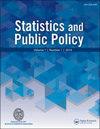On Racial Disparities in Recent Fatal Police Shootings
IF 1.5
Q2 SOCIAL SCIENCES, MATHEMATICAL METHODS
引用次数: 4
Abstract
Abstract Fatal police shootings in the United States continue to be a polarizing social and political issue. Clear disagreement between racial proportions of victims and nationwide racial demographics together with graphic video footage has created fertile ground for controversy. However, simple population level summary statistics fail to take into account fundamental local characteristics such as county-level racial demography, local arrest demography, and law enforcement density. Using data on fatal police shootings between January 2015 and July 2016, I implement a number of straightforward resampling procedures designed to carefully examine how unlikely the victim totals from each race are with respect to these local population characteristics if no racial bias were present in the decision to shoot by police. I present several approaches considering the shooting locations both as fixed and also as a random sample. In both cases, I find overwhelming evidence of a racial disparity in shooting victims with respect to local population demographics but substantially less disparity after accounting for local arrest demographics. I conclude the analyses by examining the effect of police-worn body cameras and find no evidence that the presence of such cameras impacts the racial distribution of victims. Supplementary materials for this article are available online.论近期警察枪杀案中的种族差异
摘要致命警察枪击案在美国仍然是一个两极分化的社会和政治问题。受害者的种族比例和全国范围内的种族人口统计数据之间的明显分歧,加上图形视频片段,为争议创造了肥沃的土壤。然而,简单的人口水平汇总统计没有考虑到当地的基本特征,如县级种族人口统计、当地逮捕人口统计和执法密度。利用2015年1月至2016年7月期间致命警察枪击案的数据,我实施了一些简单的重新采样程序,旨在仔细检查如果警察开枪的决定中不存在种族偏见,每个种族的受害者总数与这些当地人口特征相比的可能性有多大。我提出了几种将拍摄地点视为固定样本和随机样本的方法。在这两起案件中,我都发现了压倒性的证据,表明枪击案受害者在当地人口统计方面存在种族差异,但在考虑到当地逮捕人口统计后,差异要小得多。我通过检查警察佩戴的人体摄像头的效果来结束分析,没有发现任何证据表明这种摄像头的存在会影响受害者的种族分布。本文的补充材料可在线获取。
本文章由计算机程序翻译,如有差异,请以英文原文为准。
求助全文
约1分钟内获得全文
求助全文
来源期刊

Statistics and Public Policy
SOCIAL SCIENCES, MATHEMATICAL METHODS-
CiteScore
3.20
自引率
6.20%
发文量
13
审稿时长
32 weeks
 求助内容:
求助内容: 应助结果提醒方式:
应助结果提醒方式:


